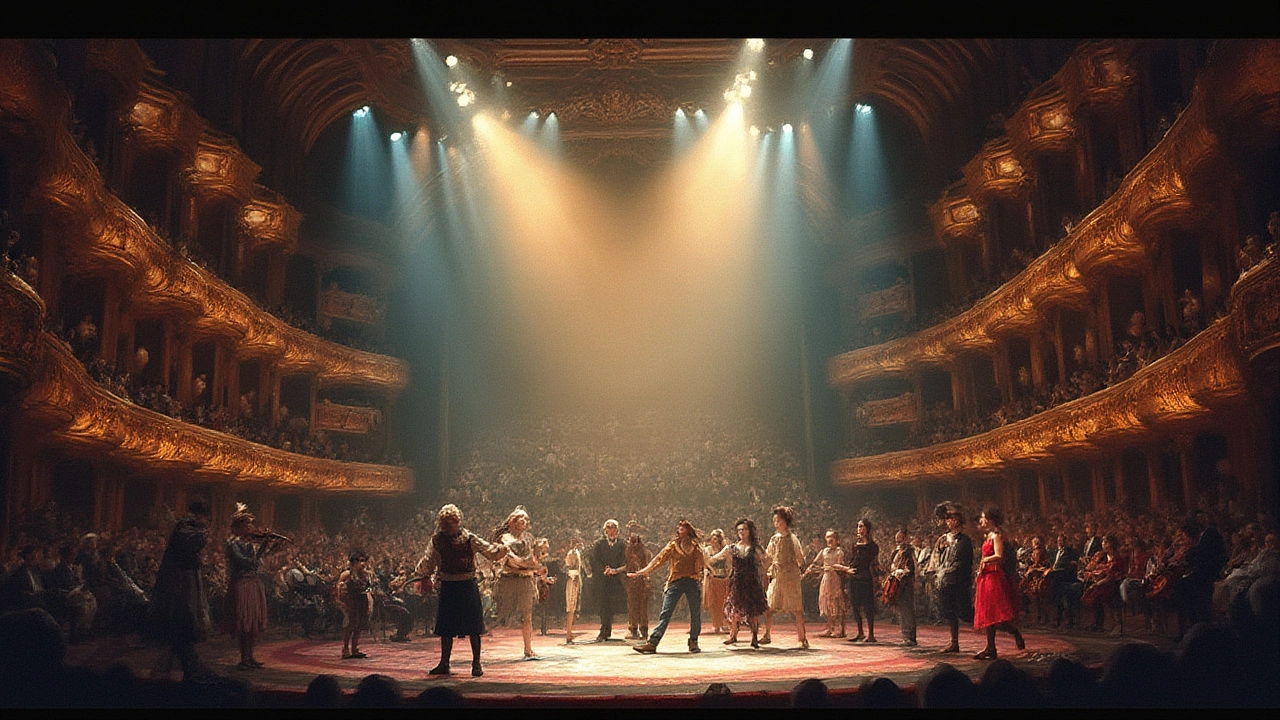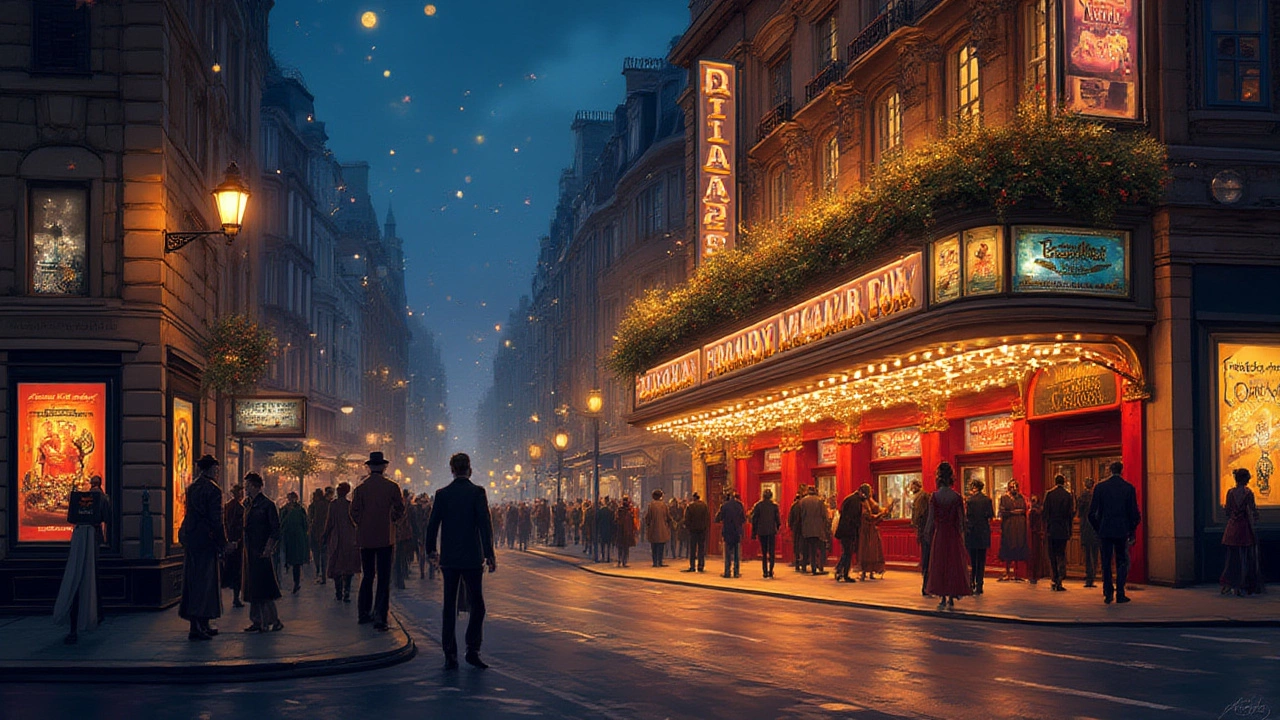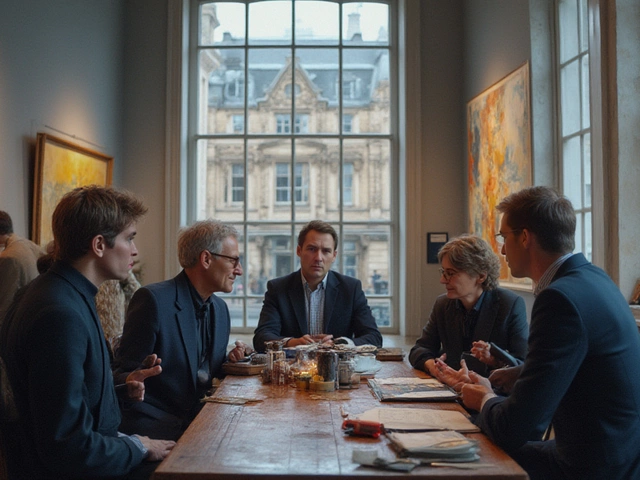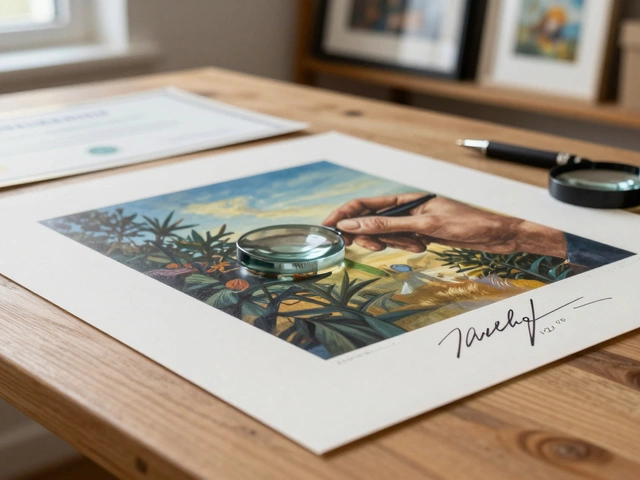Say the word “musicals” and people instantly think of jazz hands, catchy tunes, and glittery curtains. But throw the word “legit” in front, and the game changes. “Legit musicals” is a phrase actors toss around backstage like it’s some secret code, and if you’re not in the know, you might feel like you just landed at the wrong rehearsal. So what’s the real story behind legit musicals and why does it matter whether a show is called ‘legit’?
What Does 'Legit' Even Mean in Musical Theatre?
The word “legit” in musical theatre isn’t just short for “legitimate,” like some official stamp. In everyday theatre talk, legit means a particular kind of singing: think long, pure, classically trained notes, not the belting, shrieking, or rapid beat-heavy sound you get in pop or rock musicals today. The roots go deep—well over 100 years. Legit singing is basically the bridge between opera and Broadway: Beautiful, controlled, resonant, with the kind of vocal technique that could fill a 2,000-seat house before microphones started popping up everywhere.
Broadway’s earliest hits, like “Show Boat” from 1927, needed singing voices that could handle both storytelling and sonic power—without tech. Back then, you’d never call someone like Julie Andrews a ‘belter’ because she defined legit with her crystal-clear control in shows like “My Fair Lady.” Legit musicals took off between the 1920s and the late 1950s, when composers—from Rodgers & Hammerstein to Lerner & Loewe—wrote soaring melodies meant for classically trained voices. If you hear fellow theatre nerds talking about “Golden Age musicals,” they’re mostly talking about the era when legit ruled.
The term is still used today, but the style’s lost some ground as belting, pop, and even rap took over. That said, nothing will shake the foundations of shows like “The Sound of Music,” “South Pacific,” “Oklahoma!,” or “The King and I.” These shows want voices that can fill a room with beauty, not just volume. And the “legit soprano” and “legit baritone” have become almost mythical—people still take lessons to master that sound even if they mostly audition for shows that want a pop or contemporary sound.
What Makes a Musical Legit?
This is where it gets spicy. What actually makes a musical “legit” isn’t just about history or what old composers liked. Here’s the secret—most legit musicals follow a few rules:
- Classical Vocal Style: The big one. The songs are written with long melodic lines, often higher or lower than what’s easy for most people, and full of tricky jumps or held notes. You need proper breath control and formal training to nail these songs. Sarah Brightman, Audra McDonald, and Kelli O’Hara are known for their legit skills.
- Romantic or Epic Stories: The plot usually leans towards romance, huge themes, or a big moral message. No tap-dancing cats, no winking at the audience—at least, not in the classic sense.
- Sweeping Scores: The music itself tends to borrow a lot from opera and symphonic traditions. Sometimes you’ll see actual orchestras in the pit.
- Pre-1970 Vibe: Most real “legit” shows were written before Broadway switched gears into rock and pop in the late 1960s and 1970s. That doesn’t mean new legit musicals never happen, but it’s rare.
- Casting Requirements: Directors won’t even glance at you unless your audition cut shows off your legit chops. No rap breakdowns here.
Want to know what the Mount Rushmore of legit musicals looks like? Here’s a fast list—most of these are required viewing for anyone trying to learn the style:
- "The Sound of Music" (1959)
- "Oklahoma!" (1943)
- "My Fair Lady" (1956)
- "The King and I" (1951)
- "Carousel" (1945)
- "South Pacific" (1949)
- "The Light in the Piazza" (2005)—a modern throwback
Walk into auditions for these shows, and you’ll see a sea of nervous faces hoping their years of classical lessons give them an edge. There’s a reason these shows keep coming back, even now: hitting the legit notes is impressive, and that style brings out that old-school Broadway magic that just feels different from everything else.

Legit vs. Contemporary Musicals
It’s easy to get confused. Pick any Broadway cast recording from the last decade, and you’ll probably hear more belting, riffing, or screaming than anything Julie Andrews ever did. Contemporary musicals love mixing genres—pop, rock, rap, even electronica. Shift gears from “Oklahoma!” to “Hamilton” and you’ll see what I mean.
Let’s break down the differences so you never get tripped up at a dinner party with theatre folks:
| Feature | Legit Musicals | Contemporary Musicals |
|---|---|---|
| Vocal style | Classical, sustained, round sound | Pop, belt, mix, riffing |
| Era | 1920s-1960s (mainly) | 1970-present |
| Song structure | Broad, sweeping melodies | Shorter phrases, modern hooks |
| Instrumental arrangements | Orchestras, string-heavy | Bands, keyboard, drums |
| Examples | The King and I, Carousel | Dear Evan Hansen, Rent, Hamilton |
A legit musical wants technique, beauty, often restraint, and a connection to classical roots. Contemporary musicals want personality, passion, and sometimes the feeling that you’re at a pop concert or a poetry slam. Both take skill, but the muscles are different. Trying to “belt” an old Rodgers & Hammerstein song can feel like running in ski boots—pretty awkward, and probably not what the composer wanted.
If you’re a singer, here’s a tip: Don’t treat legit like a throwback. Even recent shows like “The Light in the Piazza” or “Anastasia” call for legit technique, even while bringing in a little contemporary flavor. If you can master both, you’re not just a one-trick pony—you’re hireable.
Tips for Spotting and Enjoying Legit Musicals
Here’s where things get practical. Maybe you want to impress someone with your theatre knowledge. Or maybe you just want to know if you’re randomly watching a legit musical. Here’s what you can look (and listen) for:
- Listen for the Voice: Right away, check how the leads sing. Is it full, rich, and floating over the orchestra? That’s a legit sound. Julie Andrews, Kelli O’Hara, Howard Keel—those voices define it.
- The Feel of the Show: Legit musicals almost always come with big drama, visual spectacle, and big sets. You’ll see ballrooms, grand staircases, or wide-open midwestern cornfields. It feels epic, not quirky.
- Look for Dance Breaks: A classic legit musical will always sneak in a waltz, a dream ballet, or something with formal dancing. Contemporary shows might throw in a hip-hop routine or a mosh pit—not legit style.
- Check the Songbook: Scan the show’s best-known numbers. Songs like “If I Loved You,” “You’ll Never Walk Alone,” or “Something Wonderful” belong to a different vocal universe than, say, “Defying Gravity” or “Seasons of Love.” Strong legit musicals almost always lean on soaring, melodic solos and big ensemble choruses that demand vocal blend.
- Review the Orchestra: If it sounds lush, with swirling strings and brass instead of a thumping bass and synth, odds are you’re listening to something legit. The scoring feels straight out of a movie score from the 1950s.
Even if you’re not a singer, watching a legit musical live brings a wow factor you can’t fake. There’s a reason big summer festivals and high-budget school productions keep coming back to these classics: the sound travels, the music moves people, and the stories hit just as hard now as back when my own dad took me to see “South Pacific” at the local theatre. Bryce still talks about the massive staircase reveal in “The King and I.”
If you’re serious about musical theatre, add a few legit solos to your playlist, and go see at least one legit musical live. I promise you'll never forget the first time the orchestra swells and the leading lady holds a note so long you forget to breathe.
So, the next time a performer throws around the term “legit musical,” you’ll catch the name drop. And who knows? Maybe you’ll end up craving those sweeping old-school scores just as much as the next Hamilton fan waiting for their shot at a lead role.







